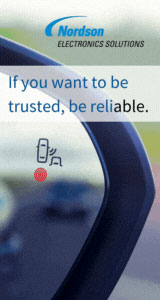| Sponsor |

|
Electronic Assembly Cleaning Basics
Monitoring & effectively controlling chemistry concentration when cleaning electronic assemblies is crucial for maintaining optimal cleanliness results & preventing costly consequences.
KYZEN
|
|
| Sponsor |

|
Reinforce Critical Components on PCBs
UV-curable, low-modulus ruggedizing adhesives secure BGAs/VGAs, improving shock & vibration resistance of electronic assemblies. Low-outgassing version available.
Dymax
|
|
| Ask the Experts |
|
|
October 20, 2008 - Updated
October 20, 2008 - Originally Posted
Types of Pad Contamination
How many types of pad contamination have been identified to date? For example, I know that there can be phosphorous and chlorine contamination.
Can this type of contamination occur while the board is being populated due to fluxes or poor thermal profiles?
It seems that the popular opinion is that it primarily takes place during the plating process.
E. F.
|
| Expert Panel Responses |
We have found pads with high levels of sulfate, sodium, ammine, rosin, and nitrate besides the chloride and phosphate contamination.
Terry Munson
President/Senior Technical Consultant
Foresite
Mr. Munson, President and Founder of Foresite, has extensive electronics industry experience applying Ion Chromatography analytical techniques to a wide spectrum of manufacturing applications.
|
|
Submit A Comment
|
Comments are reviewed prior to posting. You must include your full name to have your comments posted. We will not post your email address.
|
Free Newsletter Subscription
Circuitnet is built for professionals who bear the responsibility of looking ahead, imagining the future, and preparing for it.
Insert Your Email Address
|
| Sponsor |

|
Plasma as a Key Technology
Plasma technology improves electronics manufacturing, reduces oxide layers, prevents delamination & enables environmentally friendly products by using Openair-Plasma ® & PlasmaPlus®.
Plasmatreat GmbH
|
|
|





